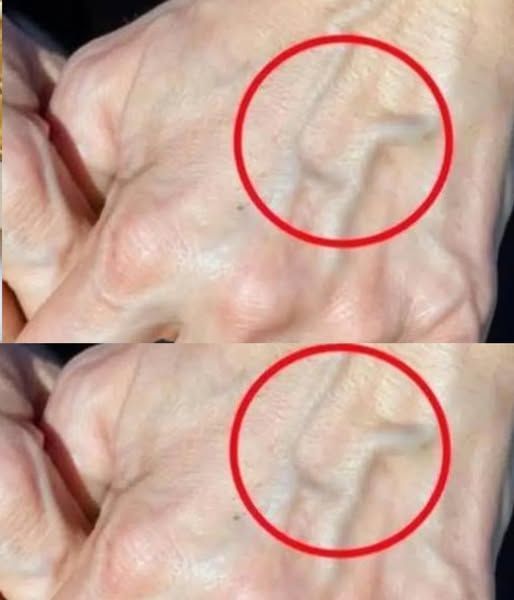You’re not alone.
Suddenly noticing new or more prominent veins can be unsettling. For many people, it’s completely normal — the result of aging, exercise, or changes in body composition.
But in some cases, sudden vein visibility can signal something more serious — especially if they’re swollen, twisted, or appear in certain areas of the body.
Let’s explore what causes veins to become visible overnight, when you should be concerned, and how to tell the difference between harmless changes and signs that deserve medical attention.
- Combines science, lifestyle, and health awareness.
- Addresses both men and women across age groups.
- Strong SEO potential around health and fitness queries.
- Perfect for monetization with high RPM health ads.
There are several non-threatening reasons why veins might pop out more than usual. Here are the mo Low Body Fat
As body fat decreases — whether from weight loss, dieting, or fitness training — the thin layer of fat covering your veins becomes less dense. This makes veins more visible, especially in the arms, legs, and torso.
Common in athletes, bodybuilders, and those following low-body-fat lifestyles.
2Exercise & Weight Lifting
During and after intense workouts, blood flow increases significantly. This temporarily enlarges veins, making them more noticeable.
Over time, regular resistance training can make veins permanently more visible due to increased muscle mass pushing them closer to the skin surface.
3. Hot Weather
Warm temperatures cause blood vessels to dilate (expand), increasing circulation to help cool the body. As a result, veins may swell slightly and become more pronounced — especially in the arms and legs.
This effect is usually temporary and goes away once the body cools down. Aging
As we age, our skin thins and loses elasticity. The underlying structures — including veins — become more visible over time, particularly on the hands and forearms.
This is often referred to as “aging veins” and is generally nothing to worry about. Hormonal Changes
Pregnancy, menopause, hormone therapy, and even birth control pills can affect vascular tone and blood flow. These hormonal shifts may cause veins to become more noticeable, especially in the legs and pelvic area.
When Sudden Vein Appearance Can Be a Warning Sign
While many instances of newly visible veins are harmless, there are times when it’s worth seeing a doctor. Look out for these red flags:
1. Swollen or Twisted Veins
If veins appear bulging, rope-like, or twisted , especially in the legs, it could indicate the early stages of varicose veins or venous insufficiency .
2. Pain, Tenderness, or Discomfort
Pain or tenderness along a vein — especially in the legs — may suggest a blood clot or deep vein thrombosis (DVT) . If swelling or warmth accompanies the pain, seek medical advice immediately.
3. Cool or Pale Skin Around Veins
If the skin around a prominent vein feels cooler to the touch or looks pale or bluish, it may indicate poor circulation or an issue with blood flow.
4. Sudden Vein Changes Without Obvious Cause
If veins become suddenly visible without any recent weight loss, exercise, or heat exposure, it’s worth discussing with a healthcare provider.
How to Tell the Difference Between Normal and Abnormal Vein Changes
| Smooth, straight, flat veins | Bulging, twisted, or raised veins |
| No pain or discomfort | Pain, tenderness, or throbbing |
| Temporary visibility (e.g., during workouts) | Persistent appearance without clear cause |
| Symmetrical on both sides | One-sided or unusual patterns |
| No other symptoms | Redness, warmth, swelling, or skin changes |
When to See a Doctor
You should consult a healthcare professional if:
- Veins appear suddenly and without explanation
- You notice swelling, pain, or discoloration
- Veins feel hard or warm to the touch
- You have a history of blood clots or circulation issues
- You’re experiencing leg heaviness, cramping, or fatigue
A simple ultrasound or physical exam can rule out conditions like varicose veins , superficial thrombophlebitis , or deep vein thrombosis .
Prevention Tips for Healthy Veins
Even if your veins are just a natural part of your body, here are ways to keep your circulatory system strong:
- Maintain a healthy weight
- Stay active and avoid long periods of sitting or standing
- Elevate legs regularly
- Wear compression socks if needed
- Stay hydrated and limit salt intake to reduce puffiness and swelling
Final Thoughts
Finding newly visible veins doesn’t always mean something’s wrong. In fact, for many people, it’s a sign of fitness, aging, or simply hot weather!
However, knowing the difference between normal variation and possible warning signs is key to staying healthy and avoiding complications down the road.
So next time you catch a glimpse of a new vein, take a moment to assess:
- Is it painful?
- Is it swollen or discolored?
- Has it changed quickly or dramatically?
If the answer is no — relax. Your body’s just doing its thing.
But if yes — don’t hesitate to reach out to a healthcare provider. Your veins are talking — and sometimes, they need to be heard.
